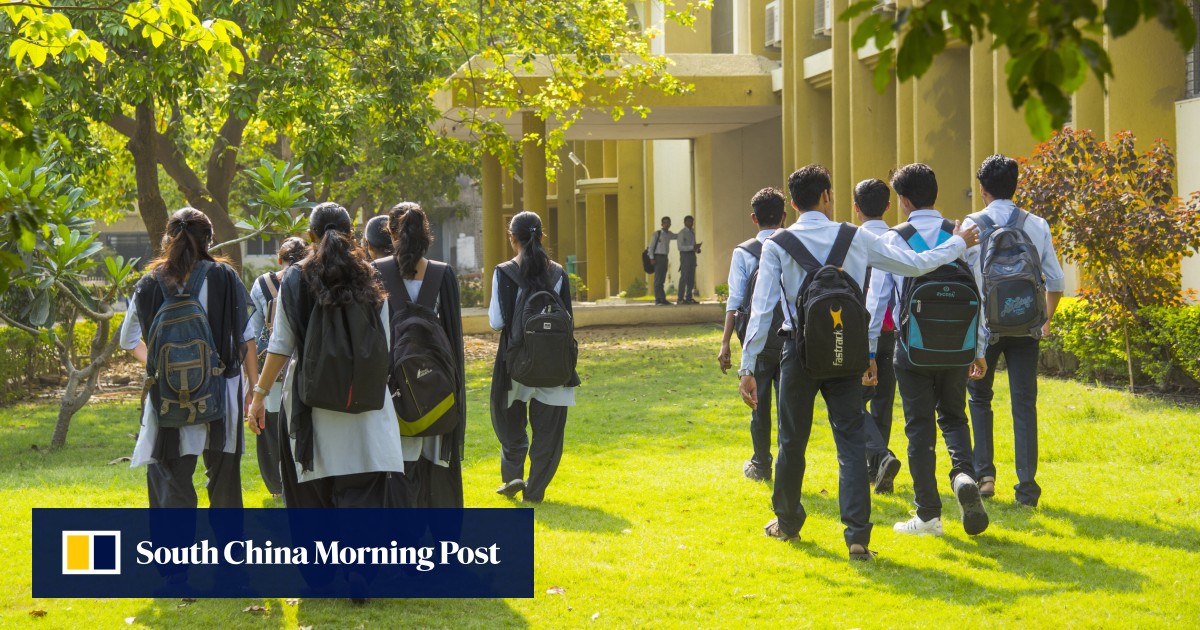Historic numbers of students from India are studying at foreign universities as a fast-growing, aspirational generation of young people looks for opportunities they cannot find at home. India estimates 1.5 million students are studying at universities elsewhere – an eightfold increase since 2012 – with no country attracting more than the US.
Mystery deaths of Indian students in US cast spotlight on safety, American dream
Mystery deaths of Indian students in US cast spotlight on safety, American dream
India’s economy is growing, but joblessness remains persistent even for college graduates. Jobs are being created in fields such as construction and agriculture, but they do not meet the demands of a newly educated workforce, said Rosa Abraham, an economist at the Azim Premji University.
“I think many young people today feel like the economy isn’t meeting their potential, their aspirations, and so they want to try their chances abroad if they can,” she said.
India’s own higher education system is also short on capacity. As its population surges, competition for admission to India’s top universities has become frenzied. Acceptance rates at some elite Indian universities have fallen as low as 0.2 per cent, compared to 3 per cent at Harvard University and 4 per cent at the Massachusetts Institute of Technology.
We produce engineers whose degrees don’t have value, so people leave the country
Lokesh Sangabattula, who is pursuing a Ph.D. in materials science at MIT, is among many hoping to land jobs inside the US There’s little demand for materials scientists in India, he said, and at best he figures he could become a professor. It’s a similar story for engineers, which India generates in huge numbers without the industry to employ them.
“We produce engineers whose degrees don’t have value, so people leave the country,” he said.
The vast majority are coming for graduate programmes, often in science, maths and engineering – fields that have faced persistent labour shortages in the US – though undergraduate numbers also are rising as India’s middle class expands. One selling point is the chance to work in America for up to three years after graduating, a benefit provided by the US government and known as optional practical training.
At Hopkins, he’s gaining professional work experience arranged by the school, a rarity at Indian universities, he said. Ultimately, he wants to return to India, but the most appealing jobs are elsewhere. After graduating, he plans to work in the US for at least a year or two.
If he could find the right job in India, he added, “I would hop right back.”
In India, American universities have become a common presence at college fairs. Many are spending big to gain name recognition in India, and they are fanning farther across the country to recruit in smaller cities and towns, where demand to study abroad has been rising.
Still, for the vast majority of India’s young people, an overseas education remains out of reach. The cost of a US education is a fortune for most, and Indian banks have scaled back on student loans in response to high default rates.
Even for those who can afford it, the student visa process presents roadblocks. At the US embassy in New Delhi, student applicants are routinely turned away.
India student deaths highlight Kota’s ‘pressure-cooker’ academic culture
India student deaths highlight Kota’s ‘pressure-cooker’ academic culture
On a recent Friday, Daisy Cheema slumped her shoulders and sighed as she left the embassy. She spent weeks preparing for a visa interview after getting accepted to Westcliff University, a for-profit college in California. She hired an agency to help, but her visa was rejected with no reason provided; she just received a slip of paper saying she could reapply.
Cheema, 22, hoped to gain work experience in the US before returning to India to support her family. Her parents, who own a gas station in the northern Indian state of Punjab, were going to pay with their savings.
“I feel terrible right now,” said Cheema, holding back tears. “But I will prepare more and try again. I’m not giving up.”
America’s shift toward Indian students is visible on campuses like the University of Texas, Dallas, where enrolment from China fell from about 1,200 to 400 over the past four years. Meantime, enrolment from India grew from about 3,000 to 4,400.
Rajarshi Boggarapu came to the US to get a master’s degree in business analytics and chose UT-Dallas in part because of its large Indian population. He borrowed US$40,000 for tuition, which he sees as an investment in his future.
India warns citizens about Canada travel as rift widens over Sikh murder
India warns citizens about Canada travel as rift widens over Sikh murder
“We value education more than anything else back in India,” he said.
Like many US universities, Johns Hopkins is deepening ties with India. It has hosted Indian diplomats to discuss health and engineering partnerships and is part of a new task force formed by the Association of American Universities to promote exchange with India.
Before he came to the US, Karkale had concerns about the political climate, but the campus made him feel welcome. When he could not return home for Diwali, the Hindu festival of lights, he was surprised to find a campus celebration that drew hundreds of students and staff.
In a campus gym adorned with colourful flowers and lamps, Karkale watched as student groups performed dances to a mix of new and old Indian music. There was a Hindu prayer ceremony. And when the dance floor opened up, Karkale joined in.
“It was a memorable evening,” he said. “It made me feel right at home.”


